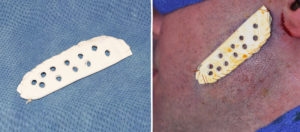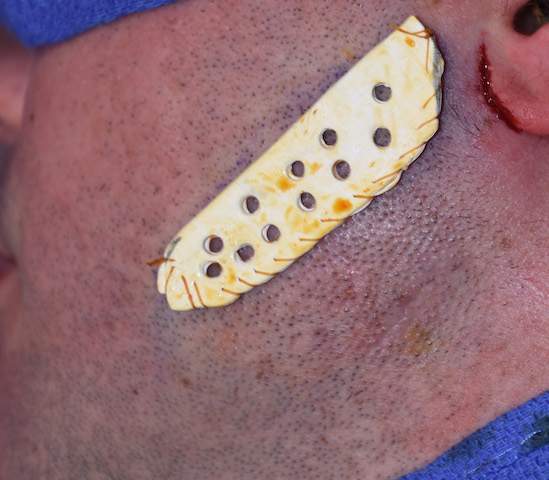The masseter is the largest muscle on the face that has its bony origin and insertion there. It is a muscle that needs to be elevated by subperiosteal dissection for any form of jaw angle surgery including implants. While lifting the muscle up is a seemingly innocuous maneuver there is always the risk of it not re-establishing its natural connection to the bone.
This important masseteric muscular connection is its insertion at the bottom of the mandibular rami or jaw angle. If the muscle looses its sling attachment at the inferior border, the muscle will retract upward. While this has no functional signficance, it does have an aesthetic one. When one chews or bites down the bulge of the muscle will be higher up than normal exposing a skeletonized angle area, whether that being the bony angle or the back edge of a jaw angle implant. This is known as masseteric muscle dehiscence.
The successful correction of masseteric muscle dehiscence is challenging. The anatomic approach is to reposition the muscle back over the jaw angle. It is most likely to be successful through a neck incision but that is not assured…but the neck scar is. Soft tissue or camouflage is the other approach to fill in the defect using injectable fillers or fat injections. But injectable fillers have to be repeated and fat injections often do not survive in this facial area.

A soft tissue jaw angle implant is a very reliable method for treating masseteric muscle dehiscence. I have found it to be more effective than sheets of Alloderm because it is volumetrically stable. There is always some risk of material edge visibility. But crimped ePTFE or the feathered edges of a custom made silicone implant makes this a low risk occurrence.
Dr. Barry Eppley
Indianapolis, Indiana



